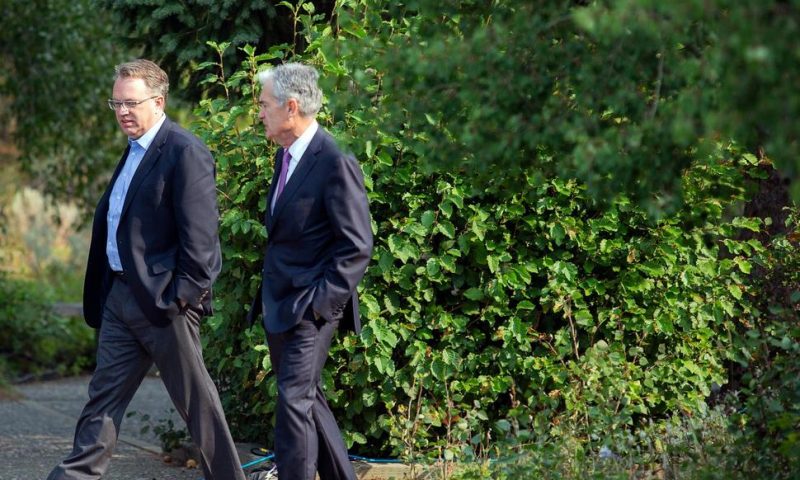A top Federal Reserve official says the US central bank needs to re-orient its policies toward fighting inflation that is too low, rather than its historic focus on keeping inflation from getting too high.
WASHINGTON — A top Federal Reserve official believes that the U.S. central bank needs to re-orient its thinking and policies toward fighting inflation that is too low, rather than its historic focus on keeping inflation from getting too high.
John Williams, president of the New York Federal Reserve Bank, said Thursday that the current environment of low inflation and low interest rates will likely persist for years. That is a challenge for Fed policymakers, because it means that they have less room to cut their benchmark interest rate in the event of a recession.
“For anyone who was trying to get a mortgage at a double-digit interest rate or seeing prices go up and up back in the days of high inflation (in the early 1980s), it’s almost unthinkable that in 2020 central banks are pondering the opposite challenge: how to prevent inflation from being too low,” Williams said in a prepared text for a speech delivered in London.
The Federal Reserve launched a review last year of its policy framework and tools in light of the challenges presented by low inflation and low borrowing costs. Fed officials expect they will quickly cut their short-term interest rate to zero during the next recession, leaving them less room to maneuver. Historically, the central bank has reduced rates by roughly 5 percentage points in a downturn. But its benchmark rate is now in a range of just 1.5% to 1.75%.
At the same time, inflation has remained stubbornly below the Fed’s 2% inflation target for most of the past seven years. While few people are concerned by low inflation, the Fed prefers to maintain a cushion against deflation, a destabilizing drop in prices and wages.
Like most economists, Williams blamed slow population growth, an aging society, weak productivity growth and strong demand for safe assets like Treasuries for the long-term decline in borrowing costs.
“One key takeaway from these global trends is that interest rates and inflation are going to stay lower than we’ve come to expect in the past,” Williams said.
The Fed should consider “doubling down” on its inflation target, he said. Americans’ inflation expectations have begun to slip, which worries many Fed policymakers because expectations shape future inflation. If the public thinks inflation will stay low, for example, they are less likely to demand higher wages.
Diane Swonk, chief economist at consulting firm Grant Thornton, said doubling down could mean that the Fed, in its policy review, would clarify how long and how much it will let inflation overshoot its 2% target in the future. Overshooting could reverse the decline in inflation expectations.
Inflation expectations have fallen because of the Fed’s inability to meet its target, Swonk said. According to the Fed’s preferred gauge, prices rose just 1.5% in November from the previous year.
“A lack of credibility is one of their biggest problems,” Swonk said.
Former Fed chair Ben Bernanke said at an economics conference on Saturday that central banks “have come almost full circle” since the days of runaway inflation several decades ago.
“Low inflation can be dangerous,” Bernanke said. “The Federal Reserve and other central banks should defend against inflation that is too low at least as vigorously as they resist inflation that is modestly too high.”

